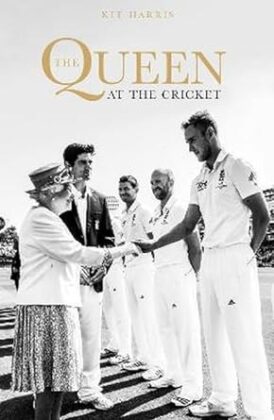The Queen at the Cricket
Martin Chandler |Published: 2022
Pages: 160
Author: Harris, Kit
Publisher: Fairfield Books
Rating: 3 stars

The single most remarkable fact I learnt from reading The Queen at the Cricket is that at the time Queen Elizabeth II passed away in September of 2022 as much as 94.3% of all international cricket had been played during her time as monarch. That as much as anything else struck me as a good reason for cricket literature to find a way to celebrate her life, and it is perhaps surprising that this rather low key release from Fairfield Books is the only publication that has sought to do that.
As Queen of England it has to be accepted that part of the job description is to show support for the greatest of English games, and even though Elizabeth was not a cricket tragic, her late husband, Prince Phillip, was something pretty close to that and, by all accounts, in his younger days played the game to a decent standard.
So whilst we can safely assume that had it been left to Elizabeth to choose her engagements herself then she would probably not have attended as many matches as she did, the fact remains that she saw plenty of cricket, mainly at home in England and at Lord’s, but also in Australia and, just once, in Pakistan where, for the only time, she saw a Test match in which England were not playing (South Africa were the opposition on that occasion).
A total 67 short chapters make up The Queen at the Cricket. Of those 44 look at ‘a day at the cricket’, and the other 23 a variety of official engagements, including a goodly number of ennoblings, more than one of those taking place in the Caribbean.
There were plenty of classic encounters in those 44 matches, foremost amongst them the remarkable draw against West Indies in 1963 when Colin Cowdrey came out to ‘bat’ with a broken arm, ‘Massie’s Match’ in the 1972 Ashes and, of course, the Centenary Test at the MCG in 1977.
The slight difficulty that Harris faces is that almost all the matches that he is concerned with have been written about before, and often at length. In addition with the Royal spectators only being present for a day the key passages of play often took place when they weren’t present.
So there is no detailed analysis of these famous games, just a summary of the match, followed by a look at the specifics of the day the Queen attended. There was no great research required, and the summaries add nothing to the accounts available elsewhere, but Harris is a decent writer who knows his subject. Where he has done his research is in relation to the Queen’s other cricket related activities and what emerges is an engaging narrative and a fitting tribute to the late Queen’s support for cricket over more than seventy years.






Leave a comment